Medical
Electrocardiography (ECG)
Recording of the heart’s activity.
Electrocardiography is the process of recording the electrical activity of the heart. These activities are recorded using electrodes that are placed on the skin (heart areas). A voltage-time graph obtained through ultra-sensitive electronic devices (sensors) detects, records and displays the electrical activity of the heart. Changes in the normal ECG pattern diagnose many abnormalities of the human heart.

The electrical signals of the heart are produced by specialized cardiac muscle cells called pacemaker cells, which are located in the sinoatrial (SA) node, a small area of tissue in the upper right atrium of the heart. These cells have the ability to spontaneously depolarize, or change their electrical charge, and generate an action potential, which spreads throughout the heart and coordinates its rhythmic contraction.
When the SA node generates an action potential, it spreads through the right and left atria, causing them to contract and pump blood into the ventricles. The action potential then reaches the atrioventricular (AV) node, another specialized area of tissue located between the atria and the ventricles, where it is delayed briefly to allow the atria to finish contracting before the ventricles are activated.
After the delay at the AV node, the action potential travels through the bundle of His, a specialized bundle of cells that extends down the interventricular septum, and into the Purkinje fibers, which are specialized cells that spread the signal rapidly throughout the ventricles, causing them to contract simultaneously and pump blood out of the heart.
The electrical signals generated by the heart can be detected using an electrocardiogram (ECG), which records the electrical activity of the heart from electrodes placed on the skin of the chest, arms, and legs. The resulting ECG waveform provides information about the rate, rhythm, and other characteristics of the heart’s electrical activity, which can be used to diagnose and monitor a variety of cardiac conditions.

GebrabitECG modules
ECG stands for electrocardiogram, which is a medical test that records the electrical activity of the heart. The electrical activity of the heart is generated by specialized cells called pacemaker cells, which produce electrical signals that spread through the heart and cause it to contract and pump blood.
An ECG machine records these electrical signals and produces a graphical representation of the heart’s electrical activity over time. This is usually done by placing electrodes on the chest, arms, and legs of the patient, which detect the electrical signals produced by the heart and transmit them to the ECG machine.
ECG is commonly used to diagnose and monitor various heart conditions, such as arrhythmias (irregular heartbeats), heart attacks, and heart failure. It is a non-invasive and relatively simple test that can provide important information about the heart’s health and function.
GebraBit modules, which are designed and built to collect bioelectrical signals from the body surface, are actually the integration of ICs and special and extremely sensitive parts in the form of kits and modules.
In addition to using the best and most practical modules, Gebrabit’s engineering team tries to consider both the economic aspect and the quantity of ICs and parts, as well as the quality and accuracy.
Also, Gebrabit’s engineering team, with its experienced and skilled engineers, will provide you with as much technical information and sample methods as possible to set up these modules.
In the end, it should be mentioned: considering that these modules deal with human health and life; It is strongly recommended to consult and cooperate with experienced experts for industrial or medical use.
|
|
Product
|
Type
|
Resolution
|
Channel
|
Interface
|
Sampling Rate
|
Buy
|
DOC
|
|---|---|---|---|---|---|---|---|---|
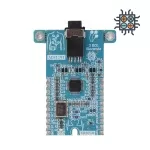
|
Digital
|
16-Bit
|
2-channel
|
SPI
|
125 SPS to 8 kSPS
|
|
||

|
Digital
|
16-Bit
|
2-channel
|
SPI
|
125 SPS to 8 kSPS
|
|
||
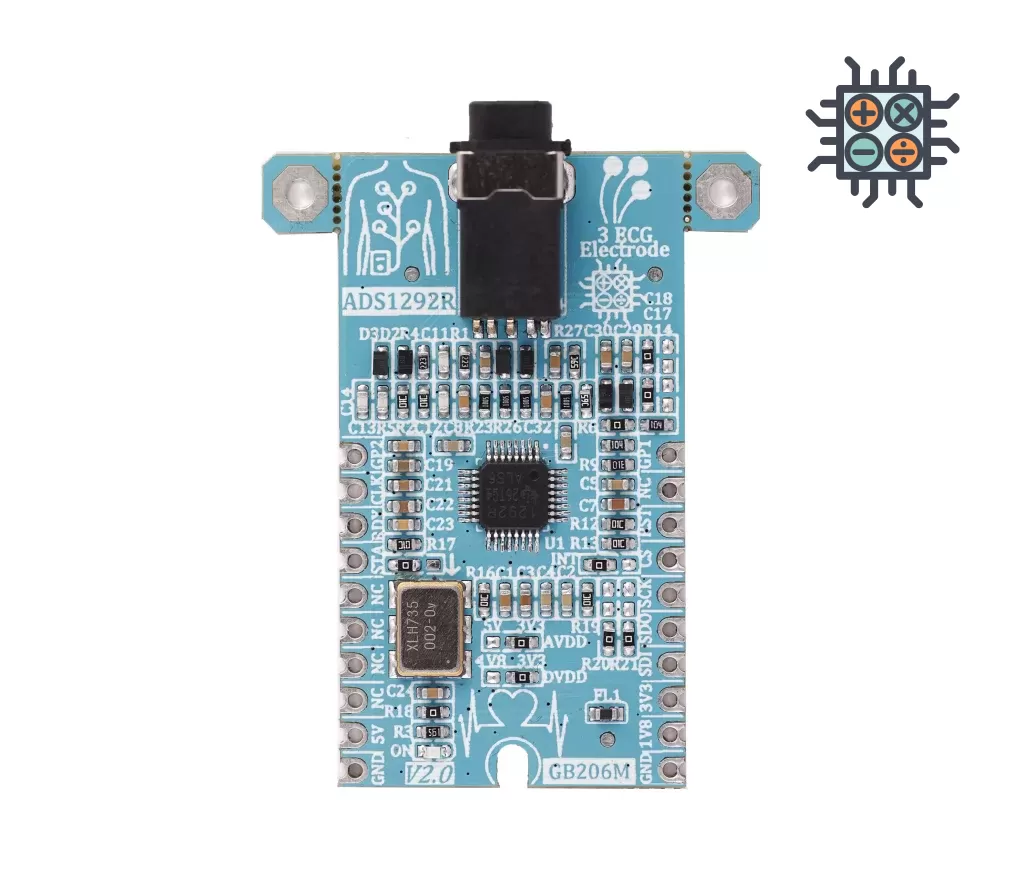
|
Digital
|
24-Bit
|
2-channel
|
SPI
|
125 SPS to 8 kSPS
|
|
||
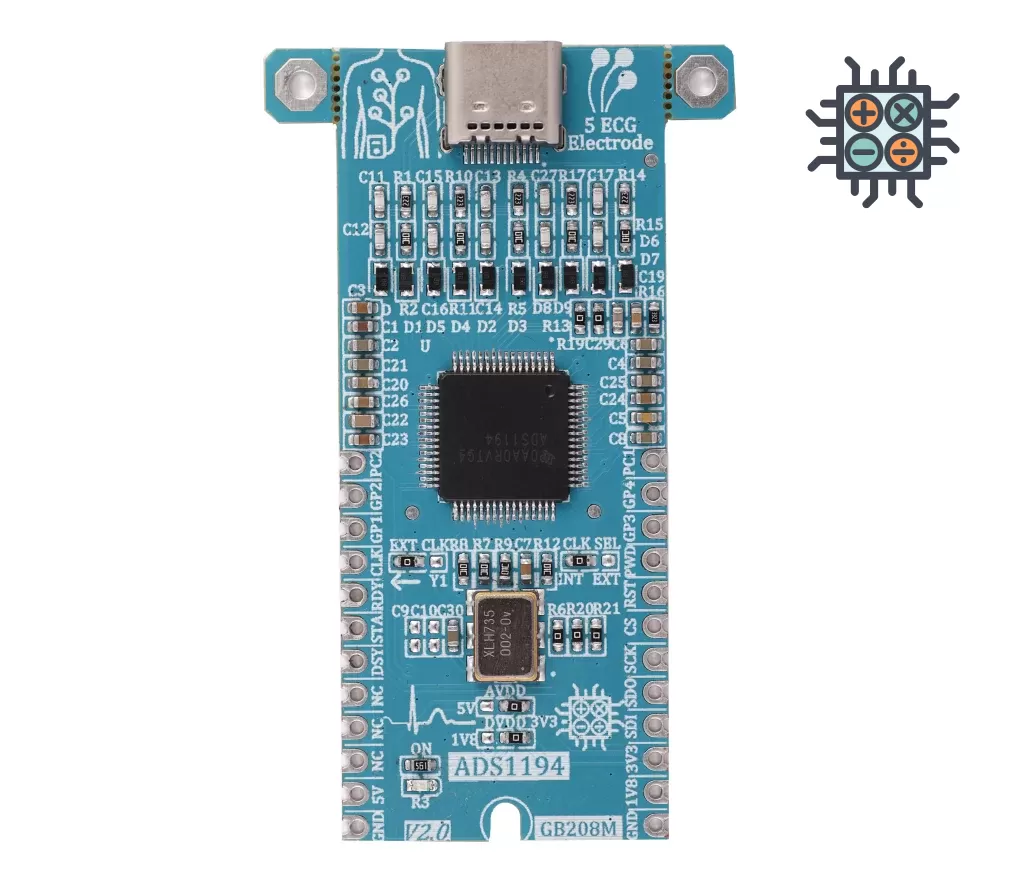
|
Digital
|
16-Bit
|
8-channel
|
SPI
|
125SPS to 8kSPS
|
|
||
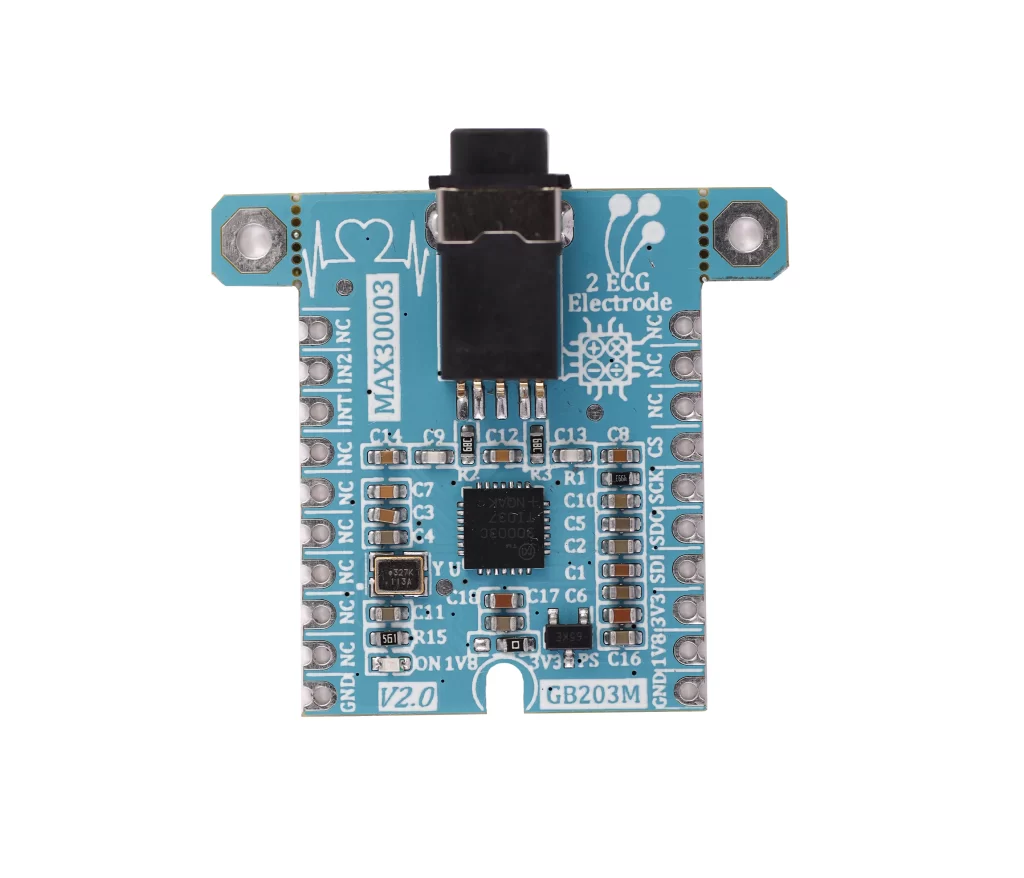
|
Digital
|
18-Bit
|
single-channel
|
SPI
|
125 SPS to 512 SPS
|
|
||
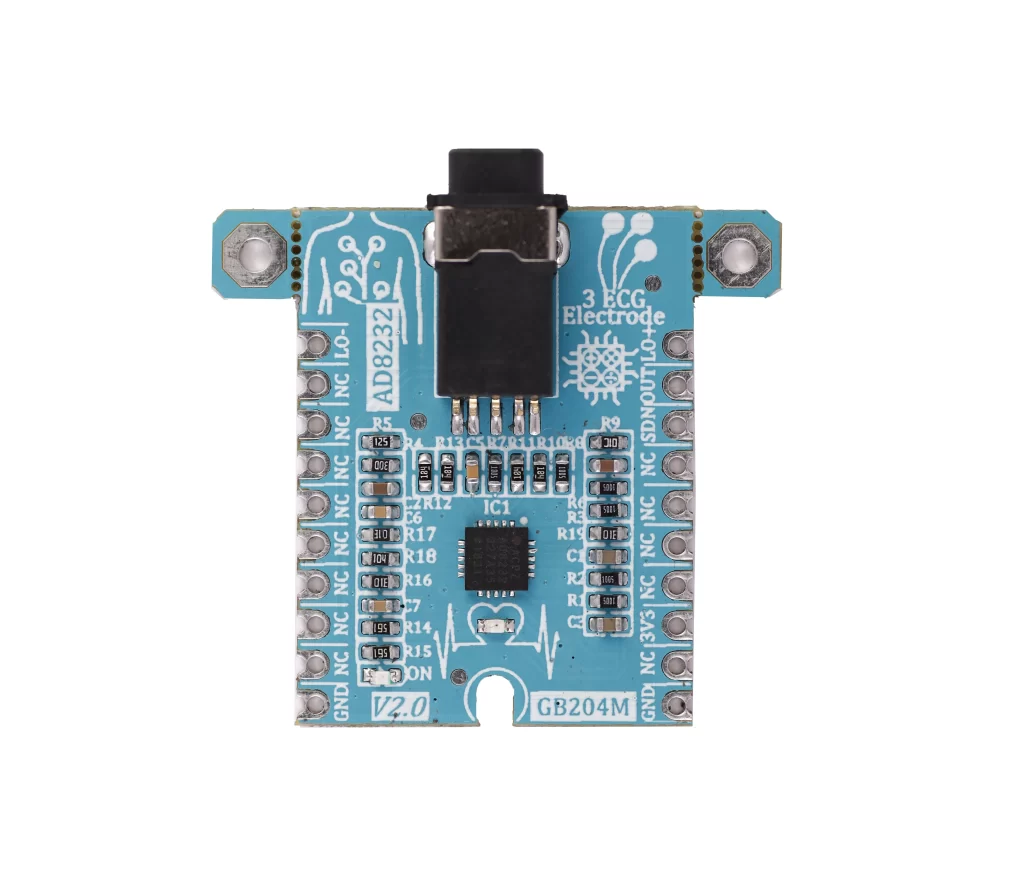
|
Analog
|
---
|
---
|
Analog
|
360SPS to 2KSPS
|
|
Frequently Asked Questions
What is an ECG sensor?
An ECG sensor is a device that is used to measure the electrical activity of the heart and transmit this data to an ECG machine or other recording device. The sensor is typically made up of several small metal electrodes that are attached to the skin on the chest, arms, and legs of the patient.
The electrodes are connected to a lead wire or a wireless transmitter that sends the electrical signals to the ECG machine or other recording device. The ECG sensor detects the electrical signals produced by the heart as it beats, which are amplified and recorded by the machine or device.
ECG sensors can be used in a variety of settings, including hospitals, clinics, and homes. They are commonly used to monitor patients who have heart conditions, such as arrhythmias, heart attacks, or heart failure, and can provide important information about the health and function of the heart.
Recent advances in technology have led to the development of wearable ECG sensors, which can be worn on the body for extended periods of time to monitor the heart’s activity continuously. These devices are particularly useful for detecting irregular heartbeats and other cardiac abnormalities that may occur infrequently or intermittently.
How do ECG system work?
An ECG system consists of several components that work together to measure and record the electrical activity of the heart:
Electrodes: Small metal sensors called electrodes are attached to the skin on the chest, arms, and legs of the patient. These electrodes detect the electrical signals produced by the heart and transmit them to the ECG machine.
Lead wires: The electrodes are connected to lead wires that carry the electrical signals from the electrodes to the ECG machine.
ECG machine: The ECG machine records the electrical activity of the heart and produces a graphical representation of this activity over time. The machine is typically equipped with several channels or leads that can record the electrical signals from different parts of the heart.
Computer: Many modern ECG machines are connected to a computer, which allows the data to be stored and analyzed digitally.
Here is a simplified overview of how an ECG system works:
The electrodes are attached to the skin on the chest, arms, and legs of the patient.
The lead wires carry the electrical signals from the electrodes to the ECG machine.
The ECG machine amplifies and records the electrical activity of the heart, producing a graphical representation of this activity over time.
The data can be stored and analyzed digitally, allowing doctors to interpret the results and diagnose any heart conditions that may be present.
Overall, the ECG system provides a non-invasive and relatively simple way to measure and record the electrical activity of the heart, providing valuable information about the health and function of the heart.
What is evident in ECG?
An ECG (electrocardiogram) provides a graphical representation of the electrical activity of the heart, and there are several things that can be evident or observed in an ECG. Here are some of the common findings that can be evident in an ECG:
Heart rate: The ECG can show the heart rate, which is the number of times the heart beats per minute.
Heart rhythm: The ECG can show the regularity or irregularity of the heart rhythm. For example, a regular rhythm with normal intervals between the beats is considered normal, while an irregular rhythm with varying intervals between the beats may indicate an arrhythmia.
Electrical conduction abnormalities: The ECG can show if there are any abnormalities in the electrical conduction system of the heart, such as blockages in the electrical pathways or abnormal rhythms originating from certain areas of the heart.
Heart damage: The ECG can show if there is any damage to the heart muscle, which may indicate a previous heart attack or other conditions affecting the heart muscle.Heart enlargement: The ECG can show if the heart is enlarged, which may indicate conditions such as high blood pressure, valve disease, or heart failure.Other conditions: The ECG can also show other conditions that affect the heart, such as electrolyte imbalances, drug effects, or certain genetic conditions affecting the electrical activity of the heart.
Overall, an ECG is a valuable tool for diagnosing and monitoring various heart conditions, and the interpretation of the findings requires the expertise of a trained healthcare professional such as a cardiologist.
When should an ECG be done?
An ECG (electrocardiogram) is a simple and non-invasive test that can provide valuable information about the electrical activity of the heart. Here are some situations when an ECG may be done:
- As part of a routine checkup: An ECG may be included as part of a routine checkup for adults, especially those who have a history of heart disease, high blood pressure, or other risk factors for heart disease.
- If a person is experiencing chest pain: Chest pain or discomfort may be a symptom of heart disease, and an ECG can help determine if the chest pain is related to a heart condition.
- If a person is experiencing palpitations or other abnormal heart rhythms: An ECG can help identify abnormal heart rhythms, which may require further evaluation and treatment.
- Prior to undergoing certain medical procedures: An ECG may be done prior to certain medical procedures, such as surgery, to evaluate the risk of heart complications during or after the procedure.
- If a person has a family history of heart disease: Individuals with a family history of heart disease may be advised to have an ECG to assess their risk of developing heart disease.
- If a person has symptoms of a heart attack: Symptoms of a heart attack may include chest pain, shortness of breath, sweating, and nausea. An ECG can help diagnose a heart attack and guide treatment.
It is important to note that the decision to perform an ECG should be made by a healthcare professional based on an individual’s specific situation and medical history.
Types of ECG electrodes?
There are several types of electrodes that can be used for electrocardiogram (ECG) testing. Here are some of the most common types:
Disposable electrodes: These are single-use electrodes that are typically made of a foam or cloth backing with a conductive gel on the underside. They are convenient, easy to use, and hygienic.
Reusable electrodes: These are electrodes that can be used multiple times and are typically made of metal or stainless steel. They require a conductive gel or paste to be applied to the skin before attaching the electrode.
Wet electrodes: These are electrodes that require a conductive gel or paste to be applied to the skin before attaching the electrode. They can provide a more accurate signal than dry electrodes and are suitable for long-term monitoring.
Dry electrodes: These are electrodes that do not require a conductive gel or paste and are easier to apply and less messy than wet electrodes. Dry electrodes can be used for short-term ECG monitoring, but they may not provide as accurate signals as wet electrodes.
Suction electrodes: These are electrodes that use suction cups to attach to the skin and do not require a conductive gel or paste. They are typically used for exercise stress tests or in situations where the patient is moving around.
The choice of electrode will depend on the specific situation and the patient’s needs. Factors such as accuracy, convenience, and cost will also be considered when choosing the appropriate electrode for ECG testing.
